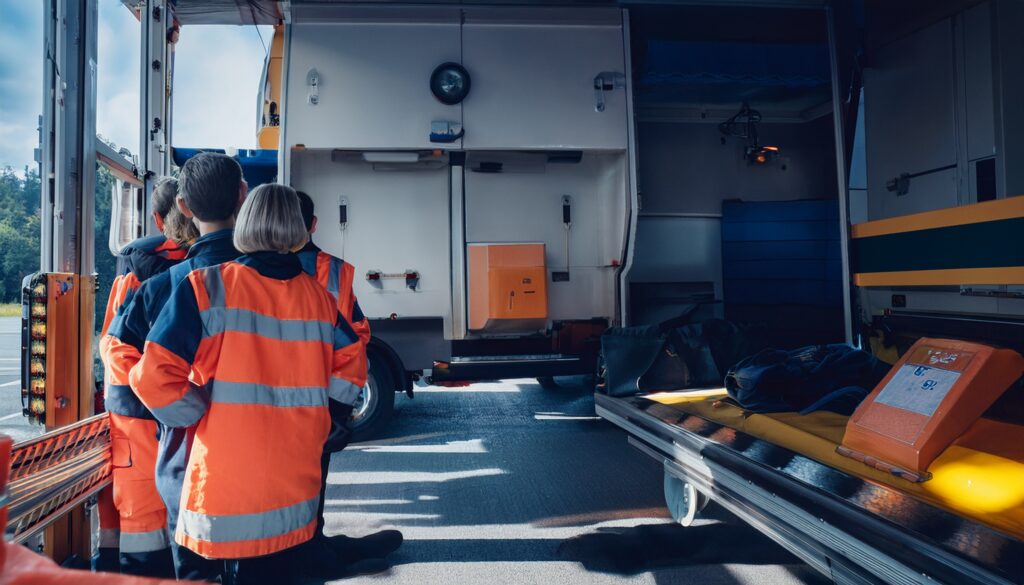Introduction
When you hear a siren or see flashing lights in your mirror, every second matters not just for you, but for someone who may urgently need help, Emergency vehicles such as ambulances, fire engines, and police cars are on a mission to save lives, and how you react can either assist or delay them.
This guide explains the smart, legal, and safe ways to respond when emergency vehicles approach, Whether you’re in traffic, turning at an intersection, or parked at the side of the road, knowing what to do ensures everyone’s safety.
🗂️ Table of Contents
1- Why Emergency Vehicles Need Priority
When someone calls for help, emergency responders have to reach the scene as quickly as possible, Whether it’s a heart attack, fire, or crime in progress, time is often the difference between life and death, Any delay even just a few seconds caused by a driver not yielding can seriously impact the outcome, Giving way promptly helps save lives.
2- Basic Rules Every Driver Must Know
Drivers are legally required to move aside and allow emergency vehicles to pass. This means:
– Slowing down
– Signaling clearly
– Pulling over to the right side of the road when safe
– Stopping until the vehicle has passed
– These actions must be taken calmly and quickly to avoid confusion and collisions.
3- Step-by-Step Guide: How to React When You Hear Sirens
1. Stay calm and don’t panic.
2. Check mirrors to locate the emergency vehicle.
3. Signal early and begin moving to the right side of the road.
4. Stop completely when possible.
5. Wait until all emergency vehicles pass before merging back into traffic.
6. Be aware of responders who may come after the first vehicle don’t assume it’s just one.

4- What to Do in Heavy Traffic
When traffic is congested and there’s no clear space to pull over, reduce your speed and move as far to the right as possible, In many cities, drivers in heavy traffic create a central open lane by spreading out slightly known as the ‘rescue lane’ . Never block the space, and avoid moving suddenly into another lane without checking for other vehicles or motorcycles.
5- Safe Behavior at Intersections
Never stop inside an intersection, even for an emergency vehicle, If you’re waiting at a red light and a siren approaches, proceed carefully through the intersection once it’s safe, and then pull to the side, If you’re already turning, complete your turn and then yield, Always give space without causing another hazard.
6- Mistakes Drivers Often Make (and How to Avoid Them)
– Slamming the brakes without signaling.
– Speeding up to avoid stopping.
– Stopping in the middle of the road or blocking crosswalks.
– Turning into an emergency vehicle’s path.
– Avoid these by staying alert and anticipating what’s ahead especially in busy or noisy areas.
7- What the Law Says About Yielding
Most countries have strict rules requiring drivers to yield to emergency vehicles using lights or sirens. Not yielding properly may lead to :
– Traffic citations and fines
– Points added to your license
– Increased insurance premiums
– In severe cases, jail time especially if you cause a delay or accident
8- The Role You Play in Emergency Response
Every second counts in an emergency, By reacting quickly and correctly, you help responders arrive sooner, save more lives, and reduce property damage, It’s a small action on your part with a potentially huge impact for others.
9- Tips for Staying Prepared Behind the Wheel
– Avoid distractions like loud music or phone calls.
– Check your mirrors regularly.
– Leave space in front of you when stopped at lights.
– Know your local traffic laws regarding yielding.
– Educate new drivers in your family or workplace.

Conclusion
Responding properly to emergency vehicles is one of the simplest yet most important driving habits you can develop, It’s not just about following the law it’s about showing respect for those who help others and doing your part to keep roads safe, Stay alert, stay calm, and always make room for those who are racing to save lives.
📌 Internal Link :
🌐 External Source:

